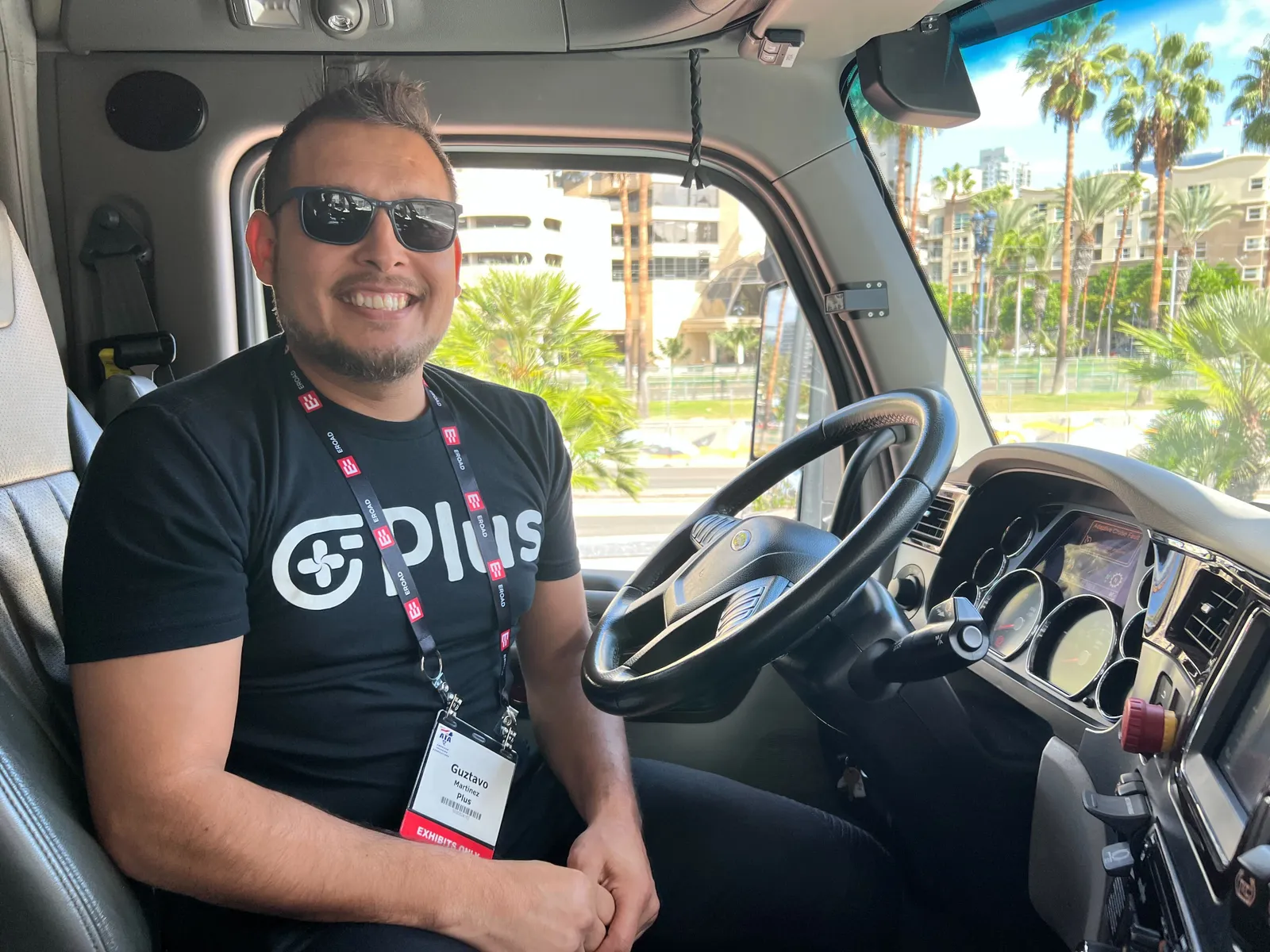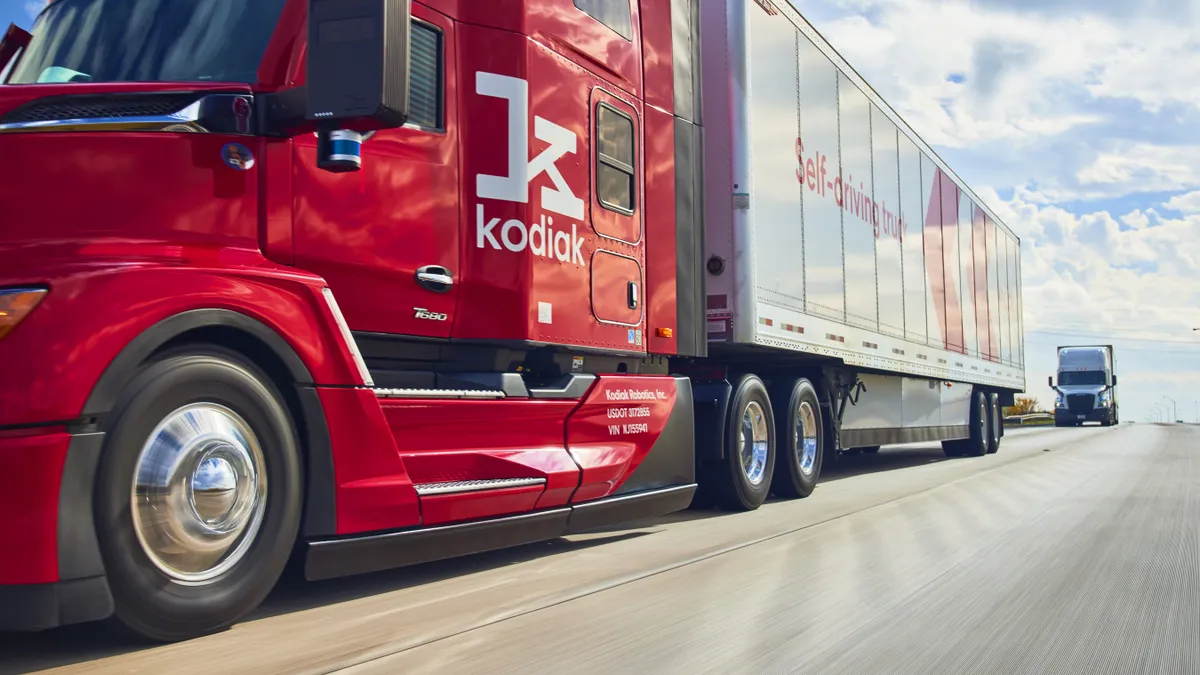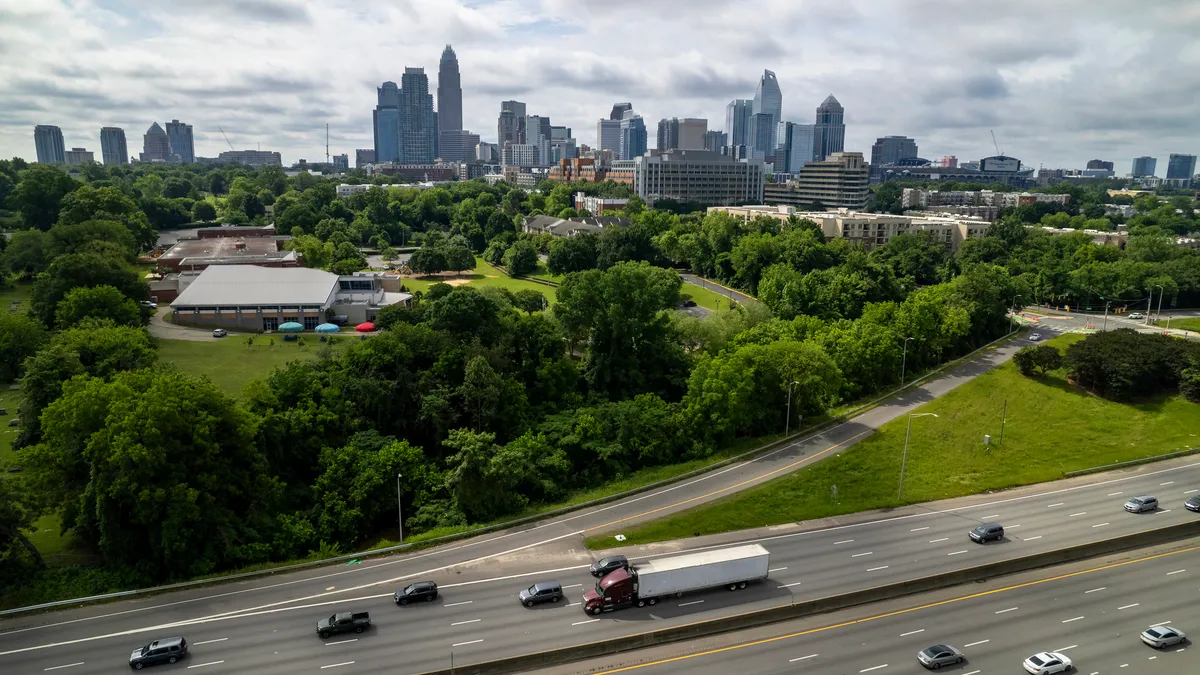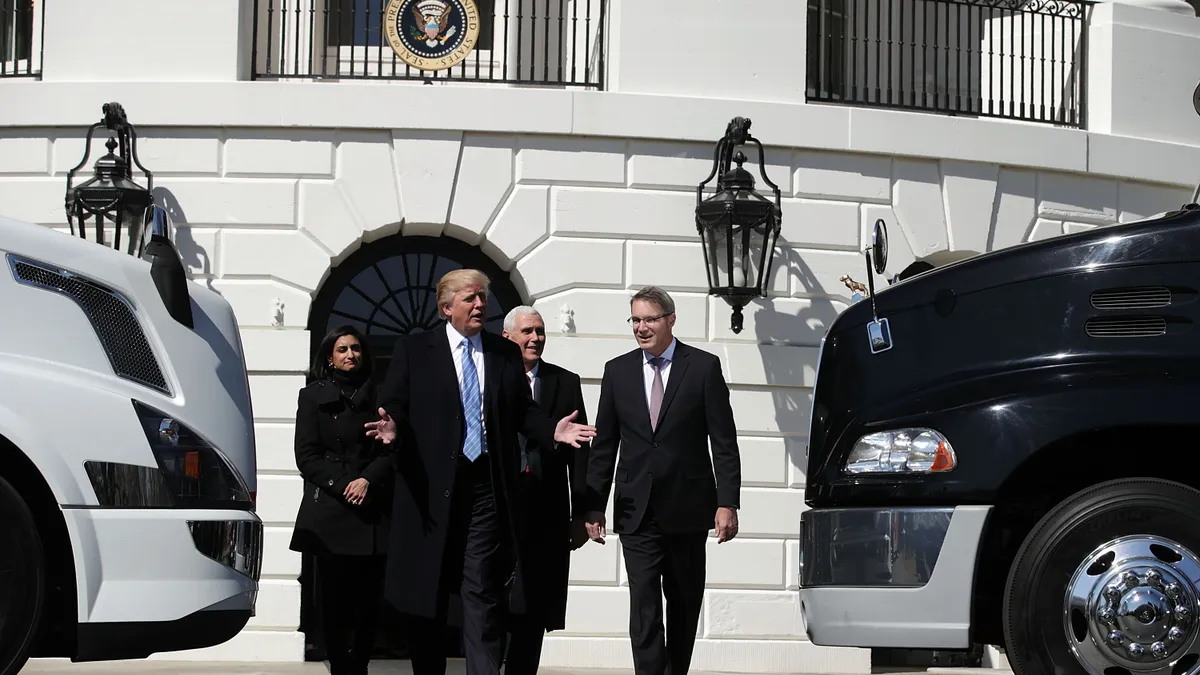SAN DIEGO — The display console read “NOT READY” as Guztavo Martinez steered a semi-autonomous Peterbilt truck toward Interstate 5 on a surface street one day late last month.
After merging onto the freeway, the driver double-tapped a button labeled “+” on the steering wheel. With a chime, PlusDrive, the AV system introduced last year by self-driving tech developer Plus, switched to “ENGAGED.”
Martinez’s hands remained on the wheel.
“This is a driving product,” he explained. “The captain of the ship has to be at work all the time. … I’m engaged. I’m using it to perform my job, but I’m not [having] the system do my job.”
Plus trucks don't fully drive themselves, but they assist with lane changing, braking and other functions that could ultimately help fleets eke out fuel savings. The company offers fleets a way to retrofit their vehicles with the technology, and big players including Amazon are expressing interest.
Martinez, a longtime truck driver who now works for Plus, demonstrated the technology’s capabilities and shared his perspective on the benefits AV trucks offer during the course of a roughly 14-mile trip with a Transport Dive reporter.
‘Lane change: initiated’
The brief trip on I-5 began and ended at the San Diego Convention Center, where Plus was showing off its tech to the industry during the American Trucking Associations 2022 Management Conference & Exhibition.
The driver-supervised technology relies on radar and lidar sensors and tiny cameras to perform automated acceleration, braking, lane changing and lane centering.
On the freeway, the console display showed the vehicles immediately in front and on either side of the truck.
When Martinez turned on a blinker, commanding the truck to change lanes, PlusDrive initially balked, highlighting the desired lane in red: A vehicle was already there.
When the car passed, he tried again.
“Lane change initiated,” the system replied. The wheel turned, and the truck changed lanes.
The truck isn’t fully autonomous, though. If the driver lets go of the wheel for 15 seconds, the system begins a 15-second countdown before the truck automatically begins slowing down. And the driver has multiple options — the simplest is a slight nudge of the wheel — to take the reins.
“The driver can take over anytime,” Martinez said.
Drive-assist deluxe
Fuel savings and improved safety are among other benefits of the platform, according to Plus. When traffic slows, the truck’s sensors allow it to begin braking earlier than a human driver — especially one stuck in traffic — might otherwise be inclined.
Despite its various capabilities, PlusDrive remains far closer to a deluxe drive-assist program than a self-sufficient robot hauling loads with no driver.
But the Santa Clara, California-based company is working toward that future, rolling out incremental improvements to its platform and demonstrating it for fleet executives and drivers, as tech and regulation slowly progress toward full Level 4 autonomy.
Plus doesn’t publicly disclose the cost of each unit. But it can install its system on customers’ new Class 8 trucks or retrofit their existing ones, and the tech has already been deployed by one of the world’s largest logistics players. Amazon ordered at least 1,000 retrofits last year.
At a time when the industry faces its second-highest number of vacancies on record, among many other challenges, Plus’ tech improves the experience of driving a truck, Martinez said.
Especially in maddening, stop-and-go traffic, the driver said, “it’s more relaxed.”
‘Something that is going to help’
After immigrating to the U.S. from Mexico at age 20, Martinez drove dump trucks, bobtails, 10-wheelers, transferring trucks, even cranes.
The driver was introduced to Plus through a friend, and he shared the initial doubts many drivers express when discussing self-driving trucks.
“We don’t think a computer is capable to do what we do on the road,” he said.

As a Plus ambassador, Martinez doesn’t try to convince them otherwise. The tech isn’t fully autonomous anyway: In its current stage, PlusDrive requires a driver to operate, and its use remains limited to the freeway.
Instead, he shares with them how the technology wraps around a driver, automating driving functions — similar to cruise control or gear shifting advancements before it — to make driving easier on the person behind the wheel.
“They can see that,” Martinez said. “I can open that little gap to make them understand: ‘No, we’re not trying to get rid of drivers. We’re actually building something that is going to help.’”





















